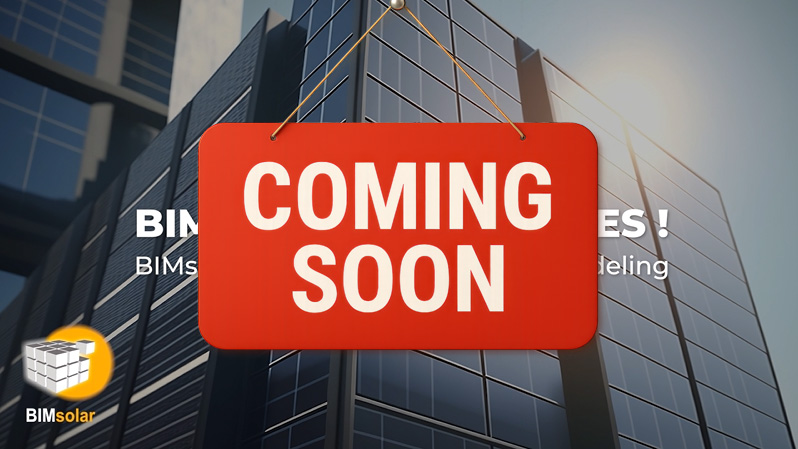 BIMsolar in 5 minutes!
BIMsolar in 5 minutes!
BIMsolar is a 3D solar simulation software dedicated to the design and integration of photovoltaic systems in buildings. Designed for architects, design offices, engineers, and Building Integrated PV professionals, it combines the power of BIM (Building Information Modeling) with advanced energy and economic analysis tools. BIMsolar is a program in constant development: follow the latest developments!
A good start with BIMsolar
BIMsolar Desktop is THE software for modeling and designing BAPV and BIPV systems from any BIM, CAD, and architectural model.
You will discover how quick and easy it is to import a project and configure it to launch a feasibility study with the best chances of success and least effort!
This video will familiarize you with the general organization of BIMsolar, its graphical interfaces with a logical progression according to the stages of solar architecture, each of which is detailed in the following section.

Key Features
CAD/BIM sources
Importation SketchUp
Importation open BIM

STEP1 - Import and setup of a project
Importing the 3D model
Project & weather setup
Albedo, shadows, camera

STEP2 - 3D Irradiation
3D solar simulation: irradiation
Solar resource mapping
Seasonality and indicators

STEP3 - SOLAR DESIGN
Module selection/creation
BAPV and BIPV layout
Contextual design: solar architecture

STEP4 - PV Inverters & Strings
Selection/creation of inverters
Connection in strings/micro-inverters
System balancing - AC production

STEP5 - Results - Metrics
Detailed results and forecasts
From component to system
Exportable curves and data

STEP6 - Financial Analysis
From Bill of Materials to CAPEX
Energy usage scenarios
Studies & financial indicators

The BIMsolar plugins
Additional BIMsolar modules
Third-party plugins
LCOE, EDGE-HP, XTREME, REVIT

BIMsolar<>REVIT plugins
Importing the REVIT project
Generating BAPV & BIPV families
Updating the project from BIMsolar

F.A.Q - Learning Page
You can learn how to use the main BIMsolar tools on your own. However, you will need modeling, BIPV, and BIM skills if you want to take on challenging solar architecture projects. We recommend taking training courses offered by BIMsolar Training certified consultants.
With the PRO or PREMIUM license, you will learn how to use the PVGIS API or import your own weather files to master the input data essential for solar simulation.
In step 2 of the BIMsolar course, you will discover the power of 3D solar simulation on architecture and urban environment, and map your model to qualify energy shading so that you don't install PV objects in the wrong places.
With BIMsolar, you will learn how to create all types of installations: ground-mounted PV, on modeled terrain, applied or integrated into buildings. There are no limits to your creativity.
BIMsolar was designed to address the specific nature of BIPV: you will therefore learn how to create and connect heterogeneous modules to each other in productive and realistic strings.
In step 4, you will be able to generate all types of results, from hourly time steps to annual reports. These are presented in graphs and histograms, and you can export them to CSV files for further processing and consolidation in your technical studies
The advantage of BIM is that the information is contained in the graphic objects and is used in real time in the calculations: this means you can use the modules and inverters to quickly obtain your quantity take-off and CAPEX estimates, and then refine your financial profitability.
Download BIMsolar Now
Landscape mode not supported on mobile device.
To ensure browsing comfort, please return to portrait mode.
